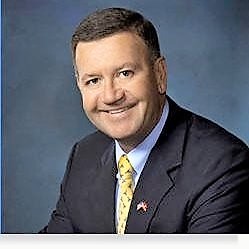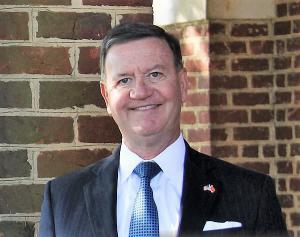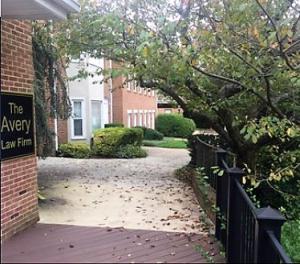Personal injury lawyer Michael Avery comments on the Norfolk Southern Railway Co. case involving FELA

Logo of The Avery Law Firm, Michael Avery, Virginia

Michael L Avery, attorney Fairfax, Virginia
A recent Virginia Supreme Court case addressed the standard of proof in a Federal Employers’ Liability Act (FELA) matter. Michael Avery, Esq. reviews.
The Avery Law Firm (N/A:N/A)
“On February 26, 2013, the plaintiff was working as the conductor of a northbound Norfolk Southern freight train running from Greensboro, North Carolina through Danville, Virginia and points north. The temperature was in the 30’s and it was cloudy with light mist or rain. The yardmaster at Greensboro warned the train’s engineer, Teddy Lester, that some ice might be encountered farther north.” Plaintiff’s duties as a conductor “required him to dismount the last car in the ‘cut’ and walk south, away from the locomotive, turning off an electric timing device on the switch, and continue walking south nearly 200 feet to release the ‘derail,’ a protective device to prevent movement of cars on the side track. He would then return north to throw the switch and call the engineer to back the ‘cut’ onto the side track.” When the engineer did not hear back from the Plaintiff as expected, he went to investigate and found the Plaintiff at the bottom of a steep embankment, very disoriented with injury and no memory as to how he got there. Plaintiff had a fractured collarbone and three fractured ribs. Plaintiff’s expert testified at trial that the walkway near the fall was too narrow and covered with inappropriate large crushed rock and it contributed to the injury. After a three-day jury trial in circuit court, the Plaintiff was awarded $336,293.
Federal Employers’ Liability Act (FELA) “was enacted by Congress in 1908, and has since been amended to serve the humanitarian purpose of imposing on railroads engaged in interstate commerce as common carriers the duty to provide their employees a safe place to work. Railroad employees who suffer injuries or death, to which a breach of that duty contributed, even to the slightest degree, were granted a remedy by way of a civil action for damages against the employer. The federal and state courts were given concurrent jurisdiction to adjudicate such actions.” The Court noted that “[u]nder the FELA, a railroad has a non-delegable and continuing duty to use reasonable care to furnish its employees a safe place to work. The employer must perform inspections to discover dangers in the place where employees are required to work and after discovering the existence of dangers the employer must take precautions for the employees’ safety.” The Court went on to explain that standard of proof and proximate cause in a FELA case is more lenient than a traditional tort case.
The central issue on appeal was whether there was sufficient proof of causation. The Court explained that “[i]n FELA cases, causation may be proved by circumstantial evidence alone and does not require direct evidence.” Therefore, the Court concluded that “[t]here was evidence to support the inference that the defendant’s negligence played a part, however small, in causing the fall which was the source of the plaintiff’s injury. The evidence may also have been sufficient to support an inference that the plaintiff’s fall resulted from causes unrelated to the defendant’s negligence. Under the settled principles governing FELA cases, that juxtaposition created a jury issue as to which inference should be drawn.” Thus, there was sufficient evidence to support the jury’s verdict and judgment was affirmed.
The case is Norfolk Southern Railway Co. v. Sumner, Record No. 180121.
About Michael L. Avery, Sr.
Michael Leon Avery, Sr., is a personal injury attorney in Fairfax, Virginia. Michael Avery has over 20 years of experience in advocating for clients who have been injured in a wide array of accidents—from car and truck accidents to bicycle crashes to accidents caused by drunk drivers. He became a lawyer after a distinguished career in the U.S. Marine Corps.
Practice Areas include:
* Auto Crashes
* Vehicle Rollovers
* Motor Vehicle Fatal Injuries
* Commercial Vehicle Accidents
* Uninsured / Underinsured Motorist
* Claims
* Distracted Driver Accidents
* Road Rage
* Truck Accidents
* Hit-and-Run Accidents
* DUI Accidents
* Passenger Injuries
* Motorcycle Accidents
* Bicycle Accidents
* Pedestrian Accidents
* Slip and Fall
* Personal Injury
References
Law Firm Website: https://averyassociateslaw.com/
Blog: https://michaelaveryesq.law.blog
News: https://attorneygazette.com/michael-avery%2C-virginia
Attorney Profile: https://solomonlawguild.com/michael-avery%2C-attorney
LinkedIn Profile: https://www.linkedin.com/in/michael-l-avery-sr-6b02012/
News: https://hype.news/michael-avery-esq
Michael Leon Avery, Sr.
The Avery Law Firm
+1 703-462-5050
email us here
Visit us on social media:
LinkedIn
Fox 31 News: Driver of semi that caused deadly, fiery I-70 crash arrested
Legal Disclaimer:
EIN Presswire provides this news content "as is" without warranty of any kind. We do not accept any responsibility or liability for the accuracy, content, images, videos, licenses, completeness, legality, or reliability of the information contained in this article. If you have any complaints or copyright issues related to this article, kindly contact the author above.



